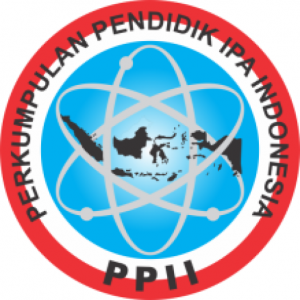Glyphosate Tolerant Bacteria from Rhizosphere of Kangkong (Ipomoea reptans Poir.) and Soybean (Glycine max L.)
Authors
Aslikh Lana Dina , Jumailatus Solihah , Arifah KhusnuryaniDOI:
10.29303/jbt.v25i1.8504Published:
2025-01-30Issue:
Vol. 25 No. 1 (2025): Januari - MaretKeywords:
Glyphosate, organophosphate pesticide, rhizosphere bacteria.Articles
Downloads
How to Cite
Downloads
Metrics
Abstract
The use of organophosphate pesticides has some risks for human health and environment. One of the organophosphate pesticides is glyphosate. Various methods used to detoxify organophosphates including chemical methods, incineration, and landfills, produce acid and alkaline compounds, leaching pesticides around land and groundwater areas, as well as toxic emissions to the environment. The bacteria with this ability can be isolated from areas contaminated with glyphosate. Kangkong (Ipomoea reptans) and soybean (Glycine max) were chosen because of these plants are commonly found in rice fields which are areas that are frequent exposure to pesticide. The interaction between rhizosphere bacteria and plants as well as the composition of existing bacteria are closely related to the remediation occured. Kangkong and soybeans (2 weeks) were treated with glyphosate 377 mM. Soil pH was measured in third and seventh days after treat with glyphosate. The bacteria were isolated a week after treatment with glyphosate, and cultured in NA medium containing 5 mM and 10 mM glyphosate. The growing bacteria were selected and re-cultured in NA + glyphosate 10 mM medium. The selected isolates were tested for glyphosate degradation ability in Mineral Salt Media containing glyphosate 5 mM and glucose 50 mg/L. Eight isolates of bacteria grew in media containing glyphosate, i.e. Kd1, Kd2, Kd3, Kd4, Kd5 from soybeans rhizosphere, and K1, K3, K4 from spinach rhizosphere. The isolate Kd4 and K4 grew more abundantly compared the other isolates, exhibited good tolerant of glyphosate. From glyphosate degrading test, the isolate from soybean rhizosphere showed more tolerance than the isolate from kangkong rhizosphere. The molecular identification revealed that both isolates belong to species Bacillus mycoides.
References
Aparicio, V.C., Geronimo, E.D., Marino, D., Primost, J., Carriquiriborde, P., Costa, J.L. (2013). Environmental Fate of Glyphosate and Aminomethylphosphonic acid in Surface Waters and Soil of Agricultural Basins. Chemosphere, 93, 1866-1873. http://dx.doi.org/10.1016/j.chemosphere.2013.06.041
Benslama, O., & Bouhlarouf, A. (2013). Application Microbial Activity on The Microbial Activity of Two Algerian Soils. Int. J. Current Microbiol Appl. Sci., 2(12), 628–635. https://www.ijcmas.com/vol-2-12/Ouided%20Benslama%20and%20Abderrahmane%20Boulahrouf.pdf
Feng, J. C., & Thompson, D. G. (1990). Fate of Glyphosate in A Canadian Forest Watershed-2-Persistence in Foliage and Soils. J. Agri. Food Chem., 38(4), 1118–1125. https://doi.org/10.1021/jf00094a046
Gordon, R. E., Haynes, W. C., & Pang, C. H. N. (1973). The Genus Bacillus. Washington: U. S. Departement Agriculture.
Indrajati, K., Hardjo, P. H., & Lika, I. J. (2005). Studi kandungan Logam Pb dalam Tanaman Kangkung Umur 3 dan 6 Minggu yang Ditanam di Media yang Mengandung Pb. Makara Sains, 9(2), 56-59. https://lib.ui.ac.id/detail?id=117420&lokasi=lokal#
Karpouzas, D. G., Fotopoulou, A., Menkissoglu-Spiroudi, U., & Singh, B. K. (2005). Non-specific Biodegradation of The Organophosphorus Pesticides, Cadusafos, and Ethoprophos by Two Bacterial Isolates. FEMS Microbiol. Ecol, 53(3), 369–378. https://doi.org/10.1016/j.femsec.2005.01.012
Kryuchkova, Y. V., Burygin, G. L., Gogoleva, N. F., Gogolev, Y. V., Chernyshava, M. P., Makarov, O. E., … Turkovskaya, O. V. (2014). Isolation and Characterization of Glyphosate Degrading Rhizosphere Strain Enterobacter Cloacae K7. Microbiol. Res., 3(169), 99-105. https://doi.org/10.1016/j.micres.2013.03.002
Kumari, A. R., Sobha, K., Mounika, K., Rau, G. J. N., & Ashok, M. (2012). Molecular Characterization of Bacteria Capable of Organophosphate Degradation. Int. J. LifeSc. Bt & Pharm. Res., 1(3), 1–9. https://ijlbpr.com/uploadfiles/20150413044846556.20230301113538.pdf
Leblanc, P.O., Breton, Y., Leveille, F., Tessier, P.A., Pelletier, M. (2024). The Impact of the Herbicide Glyphosate and its Metabolites AMPA and MPA on the Metabolism and Function od Human Blood Neutrophils and Their Sex-dependent Effects on Reactive oxygen species and CXCL8/IL8 production. Environmental research. 252 (1) https://doi.org/10.1016/j.envres.2024.118831
Leung, K. T., Moore, M., Lee, H., & Trevors, J. T. (2005). Effect of Carbon Starvation on P-nitophenol Degradation by a Moraxella Strain in Buffer and River Water. FEMS Microb. Ecol., 51(2), 237–245. https://doi.org/10.1016/j.femsec.2004.08.007
Moore, E., Arnsheidt, A., Kruger, A., Strompl, C., & Mau., M. (2004). Molecular Microbial Ecology Manual. Netherland: Kluwer. https://www.researchgate.net/publication/268414599_Molecular_Microbial_Ecology_Manual
Nakamura, L. K., & Jackson, M. A. (1995). Classification of The Taxonomy of Bacillus mycoides. Int. J. Syst. Bacteriol., 45(1), 46–49.
Nawangsih, A. A., Widjayanti, T., & Anisa, Y. (2014). Kelimpahan Bakteri Rizosfer pada Sistem PHT-Biointensif serta Kemampuan Antagonismenya terhadap Sclerotium roflsii pada Kedelai. J. HPT Tropika, 14(2), 110-120. https://doi.org/10.23960/j.hptt.214110-120
Nomura, N. S., & Hilton, H. W. (1977). The Adsorption and Degradation of Glyphosate in Five Hawaiian Sugarcane Soils. Weed Research, 17(2), 224–228. https://doi.org/10.1111/j.1365-3180.1977.tb00454.x
Nourouzi, M. M., Chuah, T. G., Choong, T. S. Y., & Lim, C. J. (2011). Glyphosate Utilization and Identififcation of New Bacteria. E-Journal of Chemis., 8(4), 1582–1587. https://doi.org/10.1155/2011/614109
Rueppel, M. L., Brightwell, B. B., Schaefer, J., & Marvel, J. T. (1977). Metabolism and Degradation of Glyphosate in Soil and Water. J. Agri. And Food, 25(3), 517–528. https://doi.org/10.1021/jf60211a018
Singh, S., Kumar, V., Gill, J.P.K., Datta, S., Singh, S., Dhaka, V., Kapoor, D., Wani, A.B., Dhanjal, D.S., Kumar, M., Harikumar, S.L., Singh, J. (2020). Herbicide Glyphosate: Toxicity and Microbial Degradation. Int. J. Environ. Res. Public Health, 17(20), 7519. https://doi.org/10.3390/ijerph17207519
Soumis, N. (2018). Glyphosate, The World's Most Widely Used Herbicide. Equiterre. https://archives.equiterre.org/sites/fichiers/backgrounder_glyphosate_2018.pdf
Sprankle, W., Meggitt, W., & Penner, D. (1975a). Adsorption, Mobility, and Microbial Degradation of Glyphosate in The Soil. Weed Sci., 23(3), 229–234. https://www.jstor.org/stable/4042279
Sprankle, W., Meggitt, W., & Penner, D. (1975b). Rapid Inactivation of Glyphosate in The Soil. Weed Sci., 23(3), 224–228. https://www.jstor.org/stable/4042278
Tamura, K., Stecher, G., Kumar, S. (2021). MEGA11: Molecular Evolutionary Genetics Analysis version 11. Molecular Biology and Evolution 38:3022-3027 https://www.megasoftware.net/pdfs/TamuraStecherKumar21.pdf
Tu, M., Hurd, C., & Randall., J. M. (2011). Weed Control. Methods Handbook : Tools & Technique for Use in Natural Areans. U.S: Utah State University. https://www.invasive.org/gist/products/handbook/methods-handbook.pdf
Wang, J. G., & Bakken, L. R. (1996). Screening of Soil Bacteria for Poly-β-hydroxybutyric Acid Production and Its Role in The Survival of Starvation. Microb. Ecol., 35(1), 94–101. https://link.springer.com/article/10.1007/s002489900063
Zheng, C., Hu, X., J. Luo, Z. W., Wang, L., Li, B., Wang, Y., & Sun, G. (2015). Degradation Dynamics of Glyphosate in Different Types of Citrus Orchard Soils in China. Molecules, 20(1), 1161–1175. https://doi.org/10.3390/molecules20011161
License
Copyright (c) 2025 Aslikh Lana Dina, Jumailatus Solihah, Arifah Khusnuryani

This work is licensed under a Creative Commons Attribution 4.0 International License.

Jurnal Biologi Tropis is licensed under a Creative Commons Attribution 4.0 International License.
The copyright of the received article shall be assigned to the author as the owner of the paper. The intended copyright includes the right to publish the article in various forms (including reprints). The journal maintains the publishing rights to the published articles.
Authors are permitted to disseminate published articles by sharing the link/DOI of the article at the journal. Authors are allowed to use their articles for any legal purposes deemed necessary without written permission from the journal with an acknowledgment of initial publication to this journal.


























